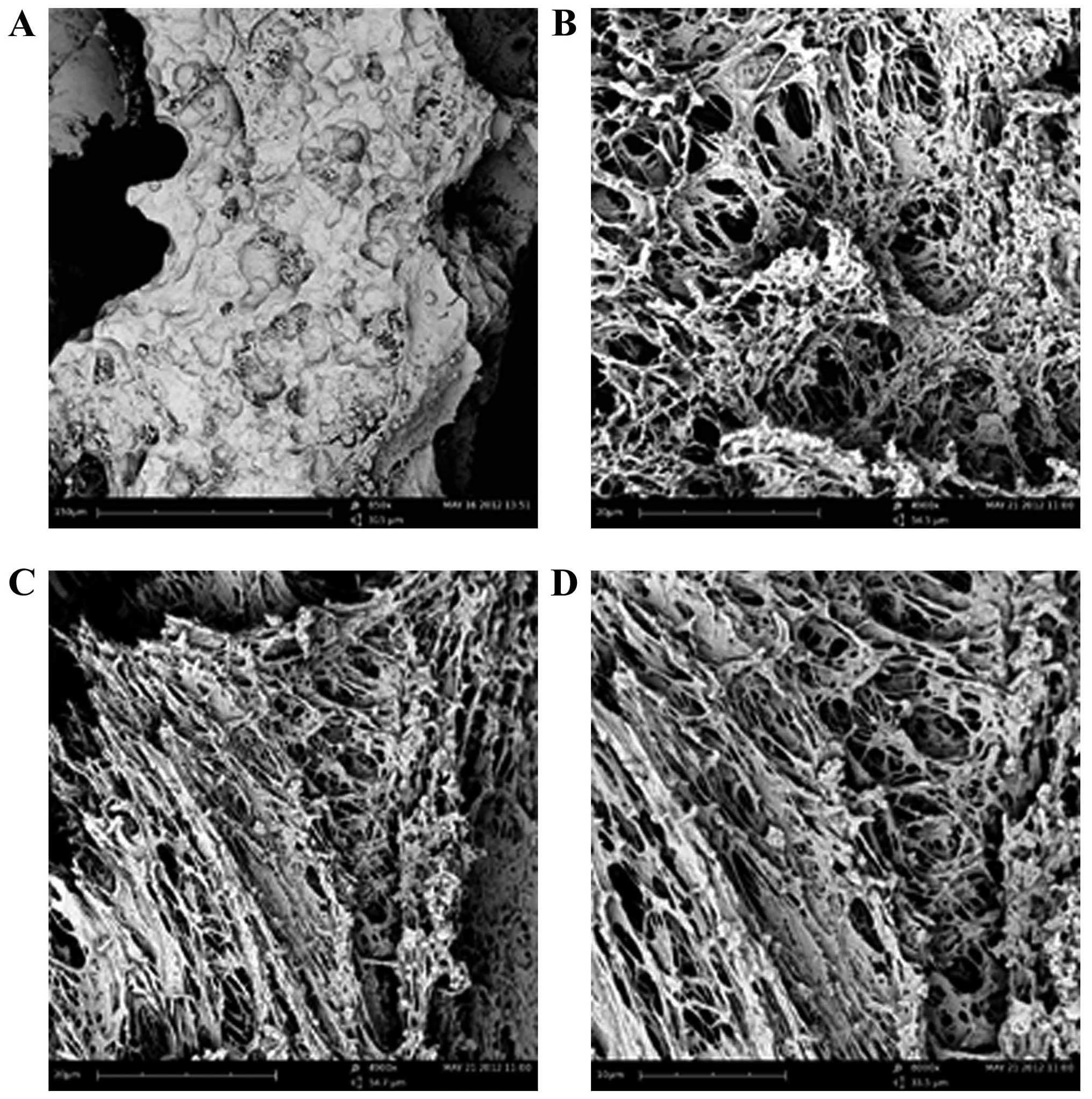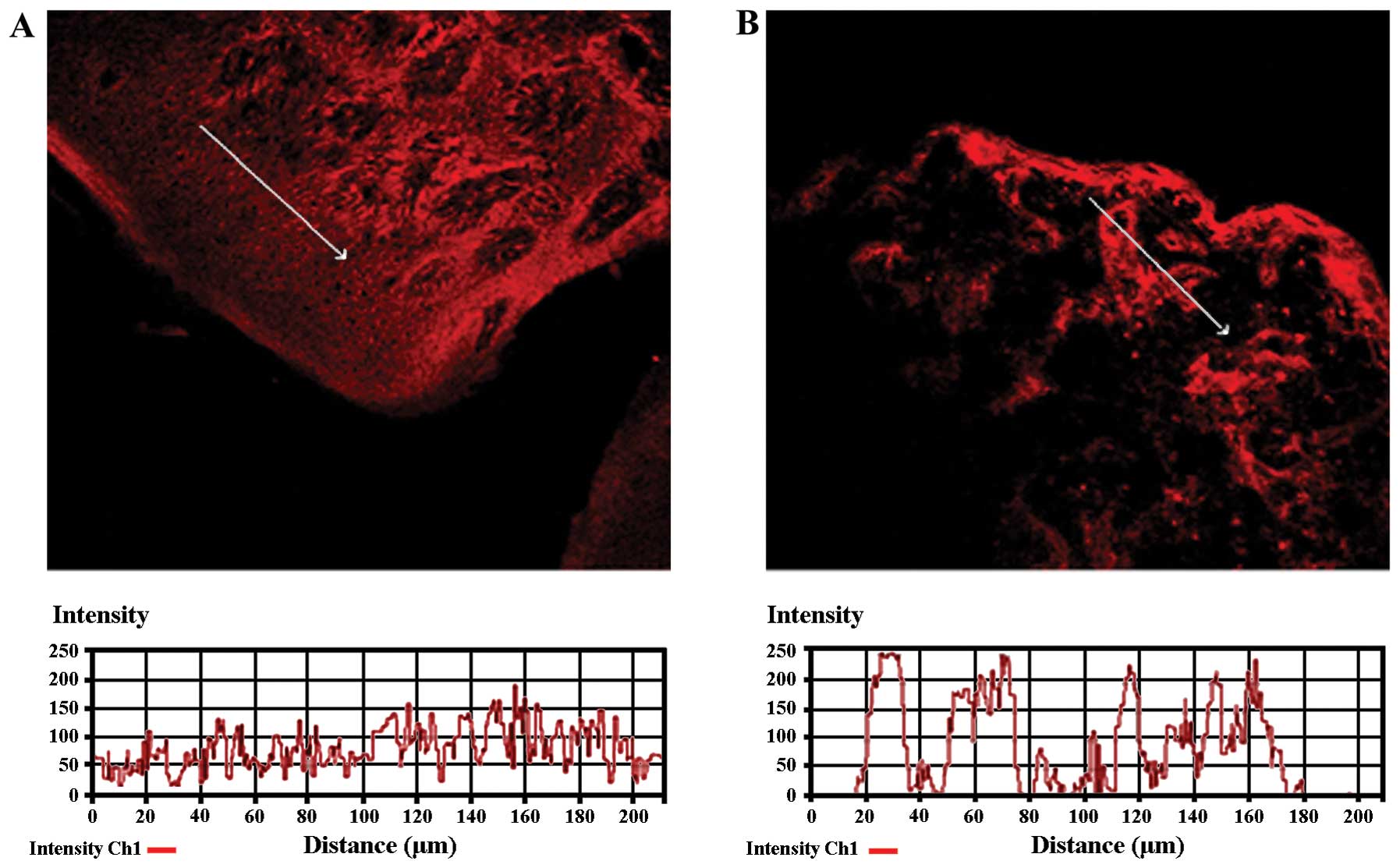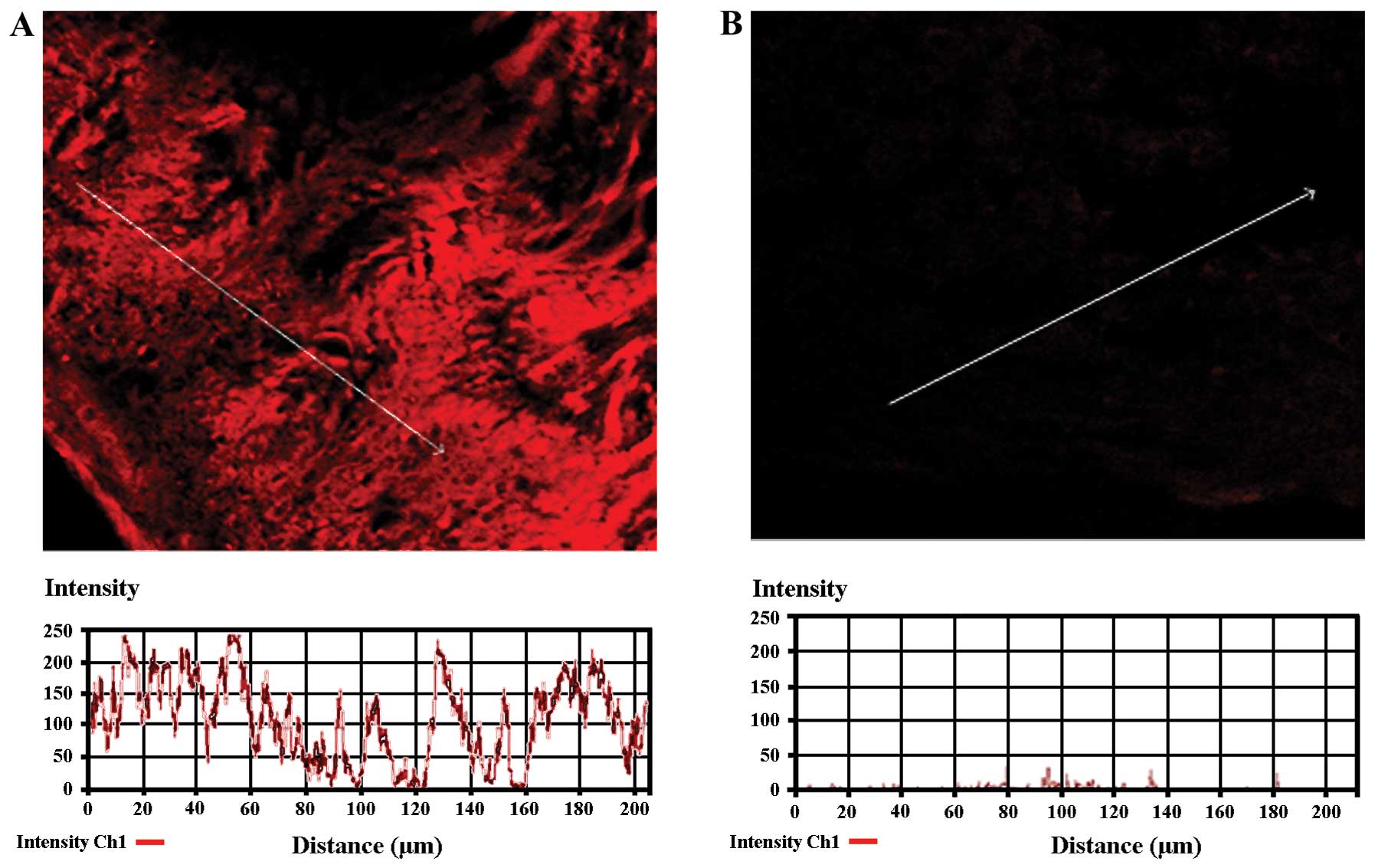|
1
|
Merigo E, Manfredi M, Meleti M, et al:
Bone necrosis of the jaws associated with bisphosphonate treatment:
a report of twenty-nine cases. Acta Biomed. 77:109–117.
2006.PubMed/NCBI
|
|
2
|
Gutta R and Louis PJ: Methemoglobinemia:
an unusual cause of intraoperative hypoxya. Oral Surg Oral Med Oral
Pathol Oral Radiol Endod. 103:197–202. 2007. View Article : Google Scholar : PubMed/NCBI
|
|
3
|
Fleisch H: The use of bisphosphonates in
osteoporosis. Br J Clin Pract. 48:323–326. 1994.PubMed/NCBI
|
|
4
|
Wang CJ, Wang JW, Weng LH, Hsu CC, Huang
CC and Chen HS: The effect of Alendronate on bone mineral density
in the distal part of the femur and the proximal part of the tibia
after total knee arthroplasty. J Bone Joint Surg Am. 85:2121–2126.
2003.PubMed/NCBI
|
|
5
|
Ficarra G, Beninati F, Rubino I, Vannucchi
A, Longo G, Tonelli P and Pini Prato G: Osteonecrosis of the jaws
in periodontal patients with a history of bisphosphonate treatment.
J Clin Periodontol. 32:1123–1128. 2005. View Article : Google Scholar : PubMed/NCBI
|
|
6
|
Marx RE: Pamidronate (Aredia) and
zoledronate (Zometa) induced avascular necrosis of the jaws: a
growing epidermic. J Oral Maxillofac Surg. 61:1115–1157. 2003.
View Article : Google Scholar : PubMed/NCBI
|
|
7
|
Ruggiero SL, Mehrotra B, Rosenberg TJ and
Engroff SL: Osteonecrosis of the jaws associated with the use of
bisphosphonates: a review of 63 cases. J Oral Maxillofac Surg.
62:527–534. 2004. View Article : Google Scholar : PubMed/NCBI
|
|
8
|
Marx RE, Sawatari Y, Fortin M and Broumand
V: Bisphosphonate-induced exposed bone (osteonecrosis/osteoporosis)
of the jaws: risk factors, recognition, prevention, and treatment.
J Oral Maxillofac Surg. 63:1567–1575. 2005. View Article : Google Scholar : PubMed/NCBI
|
|
9
|
Wood J, Bonjean K, Ruetz S, et al: Novel
antiangiogenic effects of the bisphosphonate compound zoledronic
acid. J Pharmacol Exp Ther. 302:1055–1061. 2002. View Article : Google Scholar : PubMed/NCBI
|
|
10
|
Santini D, Vincenzi B, Dicuonzo G, et al:
Zoledronic acid induces significant and long-lasting modifications
of circulating angiogenic factors in cancer patients. Clin Cancer
Res. 9:2893–2897. 2003.PubMed/NCBI
|
|
11
|
Nastro Siniscalchi E, Cutroneo G,
Catalfamo L, et al: Immunohistochemical evaluation of sarcoglycans
and integrins in gingival epithelium of multiple myeloma patients
with bisphosphonate-induced osteonecrosis of the jaw. Oncol Rep.
24:129–134. 2010.PubMed/NCBI
|
|
12
|
Woo SB, Hellstein JW and Kalmar JR:
Narrative (corrected) review: BPs and osteonecrosis of the jaws.
Ann Intern Med. 144:753–761. 2006.PubMed/NCBI
|
|
13
|
Mehrotra B and Ruggiero S: Bisphosphonate
complications including osteonecrosis of the jaw. Hematology Am Soc
Hematol Educ Program. 515:356–360. 2006. View Article : Google Scholar : PubMed/NCBI
|
|
14
|
Migliorati CA, Casiglia J, Epsten J,
Jacobsen PL, Siegel MA and Woo SB: Managing the care of patients
with bisphosphonate-associated osteonecrosis: an American Academy
of Oral Medicine position paper. J Am Dent Assoc. 136:1658–1668.
2005. View Article : Google Scholar : PubMed/NCBI
|
|
15
|
Khosla S, Burr D, Cauley J, et al:
Bisphosphonate-associated osteonecrosis of the jaw: report of a
task force of the American Society for Bone and Mineral Research. J
Bone Miner Res. 22:1479–1489. 2007. View Article : Google Scholar : PubMed/NCBI
|
|
16
|
Cheng A, Mavrokokki A, Carter G, et al:
The dental implications of bisphosphonates and bone disease. Aust
Dent J. 50:S4–S13. 2005. View Article : Google Scholar : PubMed/NCBI
|
|
17
|
Kapitola J and Zák J: Effect of
pamidronate on bone blood flow in oophorectomized rats. Physiol
Res. 47:237–240. 1998.PubMed/NCBI
|
|
18
|
Allegra A, Oteri G, Nastro E, et al:
Patients with bisphosphonate-associated osteonecrosis of the jaw
have reduced circulating endothelial cells. Hematol Oncol.
25:164–169. 2007. View
Article : Google Scholar : PubMed/NCBI
|
|
19
|
Hellstein JW and Marek CL: Bisphosphonate
osteochemonecrosis (bis-phossy jaw): is this phossy jaw of the 21st
century? J Oral Maxillofac Surg. 63:682–689. 2005. View Article : Google Scholar : PubMed/NCBI
|
|
20
|
Idris AI: Role of cannabinoid receptors in
bone disorders: alternatives for treatment. Drug News Perspect.
21:533–540. 2008.PubMed/NCBI
|
|
21
|
Iwata K, Li J, Follet H, Phipps RJ and
Burr DB: Bisphosphonates suppress periosteal osteoblast activity
independently of resorption in rat femur and tibia. Bone.
39:1053–1058. 2006. View Article : Google Scholar : PubMed/NCBI
|
|
22
|
Tobias JH, Chow JW and Chambers TJ:
3-Amino-1-hydroxypropylidine-1-bisphosphonate (AHPrBP) suppresses
not only the induction of new, but also the persistence of existing
bone-forming surfaces in rat cancellous bone. Bone. 14:619–623.
1993. View Article : Google Scholar : PubMed/NCBI
|
|
23
|
Shipman CM, Rogers MJ, Apperley JF,
Russell RG and Croucher PI: Bisphosphonates induce apoptosis in
human myeloma cell lines: a novel anti-tumour activity. Br J
Haematol. 98:665–672. 1997. View Article : Google Scholar : PubMed/NCBI
|
|
24
|
van Beek ER, Cohen LH, Leroy IM, Ebetino
FH, Löwik CW and Papapoulos SE: Differentiating the mechanisms of
antiresorptive action of nitrogen containing bisphosphonates. Bone.
33:805–811. 2003.PubMed/NCBI
|
|
25
|
Bauss F and Bergström B: Preclinical and
clinical efficacy of the bisphosphonate ibandronate in cancer
treatment. Curr Clin Pharmacol. 3:1–10. 2008. View Article : Google Scholar : PubMed/NCBI
|
|
26
|
Reid IR, Bolland MJ and Grey AB: Is
bisphosphonate-associated osteonecrosis of the jaw caused by soft
tissue toxicity? Bone. 41:318–320. 2007. View Article : Google Scholar : PubMed/NCBI
|
|
27
|
Twiss IM, de Water R, den Hartigh J, et
al: Cytotoxic effects of pamidronate on monolayers of human
intestinal epithelial (Caco-2) cells and its epithelial transport.
J Pharm Sci. 83:699–703. 1994. View Article : Google Scholar : PubMed/NCBI
|
|
28
|
Suri S, Monkkonen J, Taskinen M, Pesonen
J, Blank MA, Phipps RJ and Rogers MJ: Nitrogen-containing
bisphosphonates induce apoptosis of Caco-2 cells in vitro by
inhibiting the mevalonate pathway: a model of
bisphosphonate-induced gastrointestinal toxicity. Bone. 29:336–343.
2001. View Article : Google Scholar
|
|
29
|
Twiss IM, Pas O, Rampkoopmanscap W, den
Harigh J and Vermeij P: The effects of nitrogen-containing
bisphosphonates on human epithelial (Caco-2) cells, an in vitro
model for intestinal epithelium. J Bone Miner Res. 14:784–791.
1999. View Article : Google Scholar : PubMed/NCBI
|
|
30
|
Landesberg R, Cozin M, Cremers S, Woo V,
Koustent S and Sinba S: Inhibition of oral mucosal cell wound
healing by bisphosphonates. J Oral Maxillofac Surg. 66:839–847.
2008. View Article : Google Scholar : PubMed/NCBI
|
|
31
|
Anastasi G, Amato A, Tarone G, et al:
Distribution and localization of vinculin-talin integrin system and
dystrophin-glycoprotein complex in human skeletal muscle:
immunohistochemical study using confocal laser scanning microscopy.
Cells Tissues Organs. 175:151–164. 2003. View Article : Google Scholar
|
|
32
|
Anastasi G, Cutroneo G, Rizzo G, et al:
Sarcoglycan and integrin behavior in normal human skeletal muscle:
a CLSM (confocal laser scanning microscope) study. Eur J Histochem.
48:245–252. 2004.PubMed/NCBI
|
|
33
|
Anastasi G, Cutroneo G, Santoro G, et al:
Integrins, muscle agrin and sarcoglycans during muscular inactivity
conditions: an immunohistochemical study. Eur J Histochem.
50:327–336. 2006.PubMed/NCBI
|
|
34
|
Anastasi G, Cutroneo G, Santoro G, et al:
Costameric proteins in human skeletal muscle during muscular
inactivity. J Anat. 213:284–295. 2008. View Article : Google Scholar : PubMed/NCBI
|






















